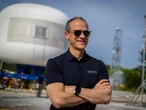We still use industrial-age language to describe work: running like clockwork, tightening bolts, and burning the midnight oil. Those phrases made sense when productivity meant turning raw material into widgets. But in an era of climate disruption, AI acceleration, and record-high burnout, a purely mechanical model can’t keep up. It drives us to measure hours instead of impact and speed instead of sustainability.
Today, with artificial intelligence reshaping knowledge work and climate urgency redefining corporate responsibility, it’s time for a new vision of productivity—one centered on human and planetary flourishing, not just output. The next evolution of work demands a shift from efficiency to emergence, from silos to systems, and from time-tracking to meaning-making.
From Machines to Living Systems
The metaphors we use drive the systems we design. Treat an organization like a machine and you’ll optimize for speed, control, and predictable outputs. Treat it like a living system—dynamic, interdependent, and regenerative—and a different design logic emerges.
Here’s what changes when we swap gears for genes:
- Sense-and-respond edges. Like cell membranes, customer-facing teams become sensors that provide real-time insights back to the core, allowing the entire organization to adapt quickly.
- Organizational metabolism. Energy (attention, data, and trust) is metabolized into creativity, innovation, and renewal, not just raw output.
- Cultural homeostasis. Healthy feedback loops foster psychological safety and inclusion, ensuring the system remains vibrant even as external conditions change.
Seeing companies this way frees leaders from predicting the future; instead, they cultivate conditions in which emergent intelligence can thrive.
Measuring Vitality, Not Just Time
The hours worked show little correlation with the value created. What matters is employee vitality, the degree to which people feel rested, connected, and empowered to take risks and experiment. Global four-day-week pilots demonstrate the benefits: burnout dropped by 71%, stress decreased by 39%, carbon emissions are noticeably lower, and retention is markedly higher.
Microsoft Japan’s Work-Life Choice Challenge, a four-day workweek pilot, proves this point. By closing offices every Friday (while maintaining pay), sales per employee increased by roughly 40%, energy use decreased by 23%, and printing costs dropped by 60%. The gains weren’t the result of heroic hustle; they were the fruit of redesigning the system itself.
Letting AI Amplify Humanity
AI can be the scaffolding for a more human-centric enterprise. Routine analysis that once devoured strategic attention now finishes in minutes. In my advisory work, I have seen leadership teams channel the freed-up bandwidth into scenario building, story crafting, and high-trust stakeholder dialogues. McKinsey estimates that generative AI could lift labor productivity growth by up to 3.4 percentage points per year through 2040. Those gains appear only when roles are deliberately reinvented, not merely automated. This isn’t AI versus humans; it’s AI with humans.
From Linear Growth to Regenerative GROWTH
If the industrial era taught us to measure work in widgets and hours, the new era demands a more integrated lens, one that blends systems thinking, emotional intelligence, and regenerative design. To translate organism thinking into everyday practice, we developed the GROWTH framework—a six-step shift from extractive output to regenerative impact:
G – Generate New Metaphors: Swap “factory” for “forest,” and “assembly line” for “ecosystem.” Fresh language surfaces hidden assumptions and fresh design options.
R – Reimagine Human Roles: Let AI handle the rote tasks so people can focus on curiosity, synthesis, and relationship-building.
O – Optimize for Human Vitality: Prioritize rest, autonomy, and connection; vital people compound long-term value.
W – Work in Ecosystems: Replace silos with cross-functional guilds that share data, talent, and learning loops. Complexity is tamed through connection.
T – Track Whole Metrics: Pair profit with carbon avoided, bias reduced, and ideas shipped. What gets measured gets improved.
H – Harvest Regeneration: Design projects that return energy to the system—employee upskilling, circular supply chains, and community partnerships.
Questions to Spark the Shift
Changing how we think about productivity begins with changing our questions. Use the prompts below in leadership sessions, strategy retreats, or team huddles to surface hidden assumptions and align around a more human-centered, system-aware approach to work.
- Which metaphors dominate our language today, and what behaviors do they reinforce?
- Where could AI relieve cognitive or emotional load so humans can do higher-order work?
- What value are we creating that isn’t yet on a scorecard—culture, climate, social trust?
- If we trimmed hours by 10%, where would vitality and innovation likely rise?
- What small regenerative habit—repair, reuse, reflective pause—could we start this quarter?
We stand at a crossroads. We can cling to mechanical models that view people as cogs and growth as linear output, or we can adopt a living-systems mindset where vitality, adaptability, and shared purpose define productivity. Redesigned productivity isn’t about working less; it’s about working more wisely. The future won’t be built by those who clock the longest hours. It will be built by those who design the richest conditions for creativity, connection, and contribution. The machine age is ending; the living-system era has begun. Let’s grow accordingly.










No comments